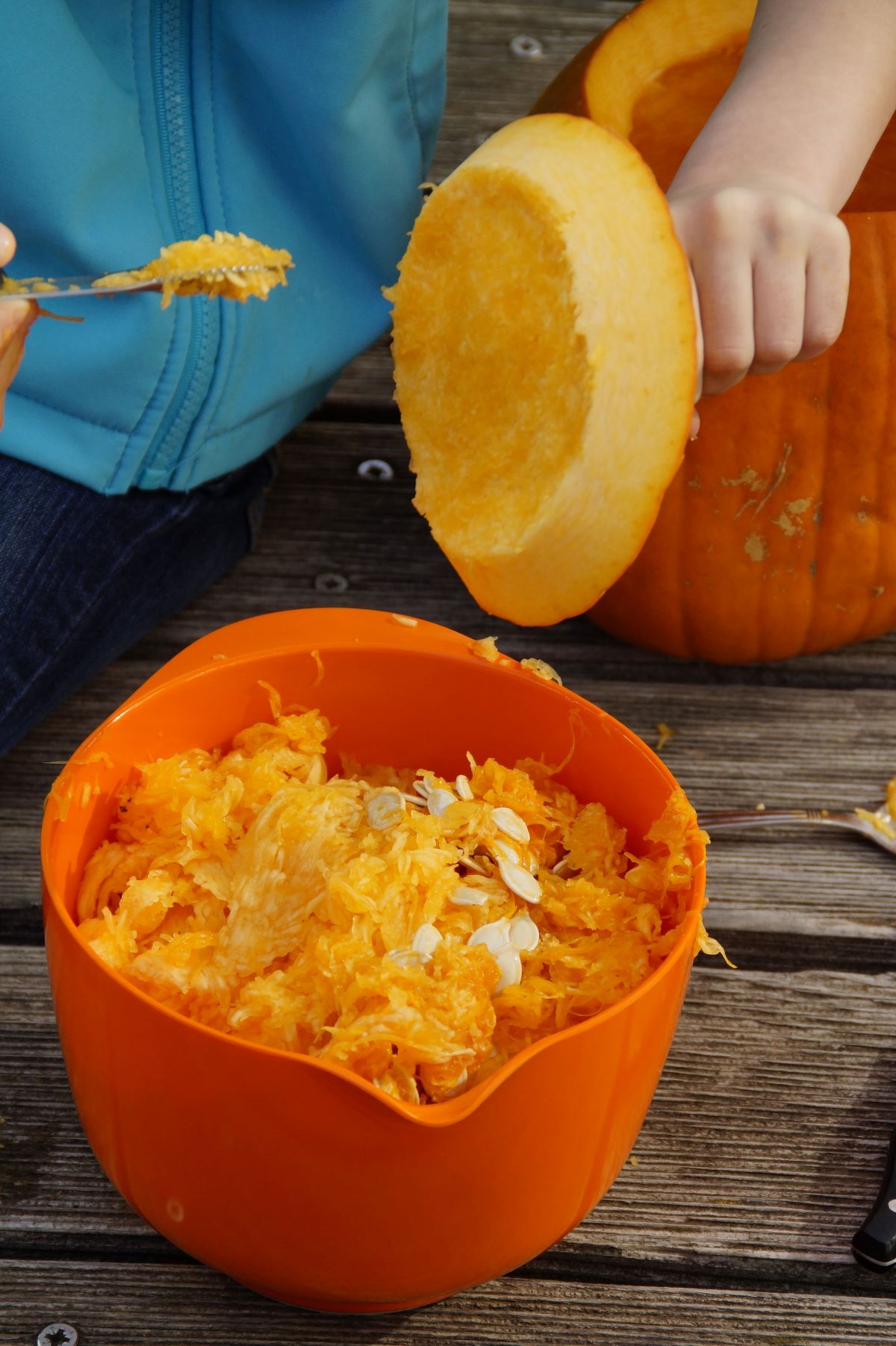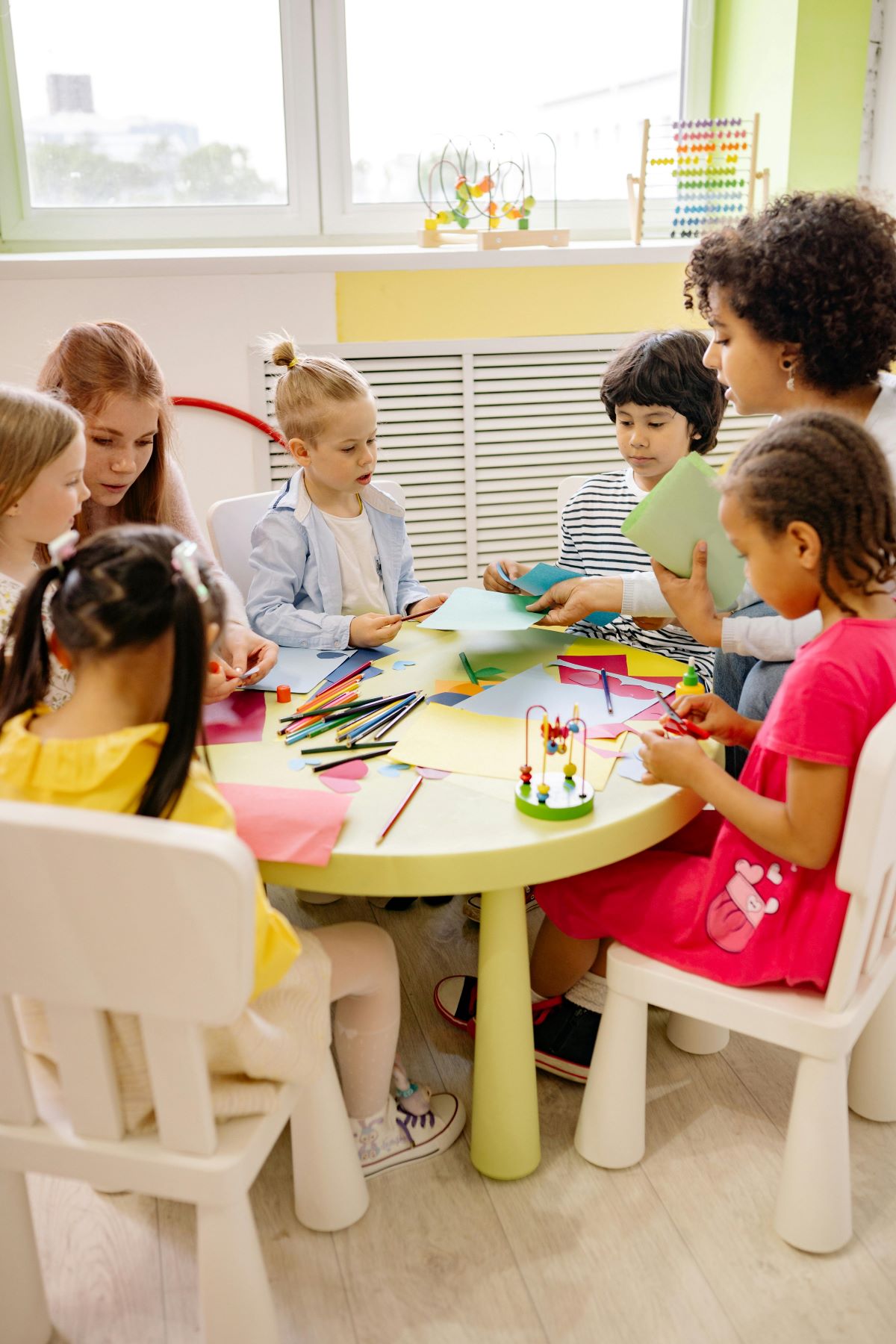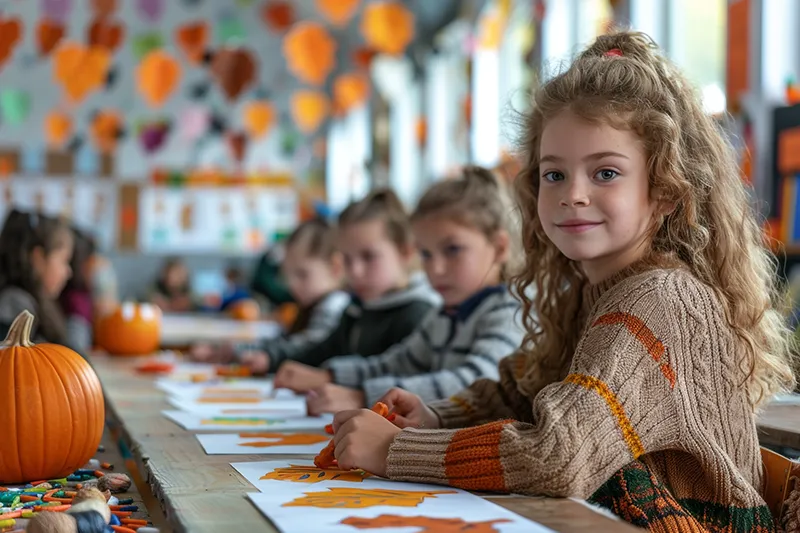Nature offers some of the best tools for learning, and pumpkins are no exception. Integrating pumpkins into your classroom curriculum can enhance lessons across multiple subjects, engaging students through hands-on activities that stimulate all five senses. By connecting learning to the natural world, you can create a dynamic, interdisciplinary experience that resonates with students. This guide explores how to incorporate pumpkins into various aspects of your curriculum, from sensory exploration to art, math, science, and history.
Sensory Exploration
Engaging students’ senses is a powerful way to deepen their connection to learning. Start by introducing pumpkins through sensory exploration. Have students use all five senses to observe and describe the pumpkin.
- Touch: Allow students to feel the pumpkin’s surface. Is it smooth or bumpy? Is it heavy or light?
- Sight: Encourage them to observe the color, shape, and size. How does this pumpkin compare to others?
- Smell: Cut open a pumpkin and let students experience its unique scent. How does it compare to other fruits or vegetables?
- Sound: Knock on the pumpkin and listen. What does the sound tell you about the pumpkin’s density or ripeness?
- Taste: If possible, let students taste pumpkin in a safe, prepared form—perhaps as roasted seeds or pumpkin pie.
After the sensory exploration, students can record their observations in journals. Worksheets can be used to help students practice descriptive writing, encouraging them to find specific words to describe their experience with the pumpkin.

Language Arts
Pumpkins can be the focal point of engaging language arts activities. Start by reading pumpkin-themed books like From Seed to Pumpkin by Wendy Harper Collins, The Pumpkin Book by Gail Gibbons, and Runaway Pumpkins by Teresa Bateman. These stories provide both factual information and imaginative narratives that can inspire students to create their own stories.
- Spelling & Vocabulary: Use pumpkin-related words such as “harvest,” “gourd,” and “seedling” to build spelling and vocabulary lists. Students can practice these words through various exercises or games.
- Creative Writing: Prompt students to write a short story involving a pumpkin. They could imagine a pumpkin’s journey from the farm to a family’s dinner table or invent a pumpkin character with its own adventures.
- Multilingual Learning: Introduce students to the word “pumpkin” in different languages. How is it said in Spanish, French, or Mandarin? This could spark discussions about the global significance of pumpkins.

Life Science
Pumpkins provide an excellent opportunity for life science lessons. Teach students about the life cycle of a pumpkin, starting from seed to sprout, vine, flower, and finally, a mature pumpkin. Life Cycles: Pumpkins by Robin Nelson is for ages 5-8.
- Life Cycle Study: Use worksheets to illustrate each stage of the pumpkin’s life cycle. If possible, plant pumpkin seeds in the classroom or school garden and observe their growth over time.
- Pumpkin Parts: Dissect a pumpkin and identify its parts—seeds, pulp, skin, and stem. Discuss the function of each part and its role in the plant’s life cycle.
- Nutrition: Explore the nutritional benefits of pumpkins. What vitamins and minerals do they provide? How do they contribute to a healthy diet?
- Culinary Exploration: Discuss various ways to eat pumpkin, such as in soups, pies, and roasted seeds. This can be extended to a cooking activity if your classroom setup allows.
- Farming and Harvesting: Discuss how pumpkins are farmed and harvested. What conditions do they need to grow? Students can learn about the agricultural process and how it ties into local or global food systems.

Art
Pumpkins are a great subject for creative art projects that appeal to students of all ages.
- Drawing and Painting: Students can draw or paint pumpkins using watercolors, crayons, or colored pencils. Encourage them to focus on different textures and colors they observe.
- Seed Art: Use pumpkin seeds to create mosaics or other art pieces. This not only promotes creativity but also gives students a tactile connection to the material.
- Decorating Pumpkins: Depending on the age group, students can decorate pumpkins with paint, markers, or other materials. Younger students might enjoy simple designs, while older students could carve or paint more intricate patterns.
Math
Pumpkins offer a range of math activities that can make abstract concepts more tangible for students.
- Estimating and Counting: Have students estimate how many seeds are inside a pumpkin and then count them. This can lead to discussions about estimation strategies and probability.
- Pumpkin Pi: Use a pumpkin pie to teach fractions. Cut the pie into different portions, and have students identify and compare fractions visually.
- Weighing and Measuring: Weigh pumpkins and measure their circumference. Students can compare different pumpkins and use their measurements to practice basic arithmetic or graphing skills.
History
Finally, pumpkins can be used to teach history and cultural studies.
- History of the Pumpkin: Explore the history of pumpkins, including their origins in the Americas and their role in indigenous cultures.
- Cultural Significance: Discuss how pumpkins are used in different cultures, from Native American traditions to Halloween celebrations in the United States.
- Agricultural History: Investigate how Native Americans used pumpkins for food, storage, and even as containers. Where do pumpkins grow naturally, and how has their cultivation spread around the world?
Conclusion
Bringing nature into the classroom provides a tremendous opportunity to encourage students to explore, discover, and develop a deeper understanding of the world around them. At a time when electronic devices are often more enticing, there’s nothing better than reminding them of what the outdoors has to offer. It’s also a great way to appeal to multiple learning styles for a more inclusive and immersive experience for a wide variety of students. From sensory exploration to history, art, math, and science, incorporating pumpkins into your classroom covers a variety of subjects in a hands-on, engaging way. Whether it’s through the crunch of a roasted seed, the bright colors of a painted pumpkin, or the historical journey of this versatile gourd, students are sure to find joy and knowledge in their pumpkin-themed lessons.


